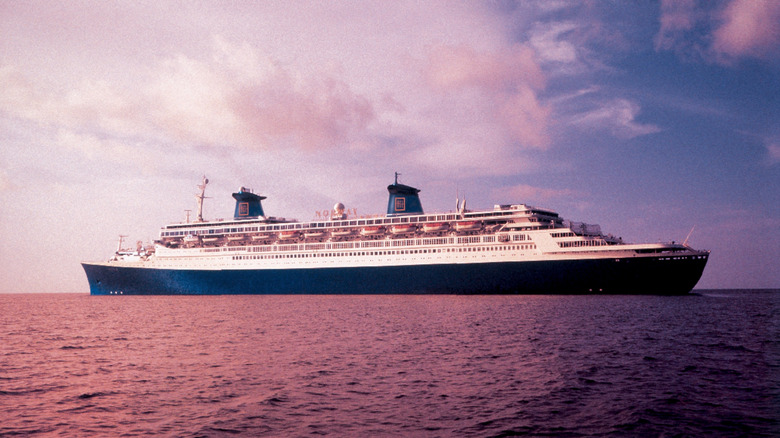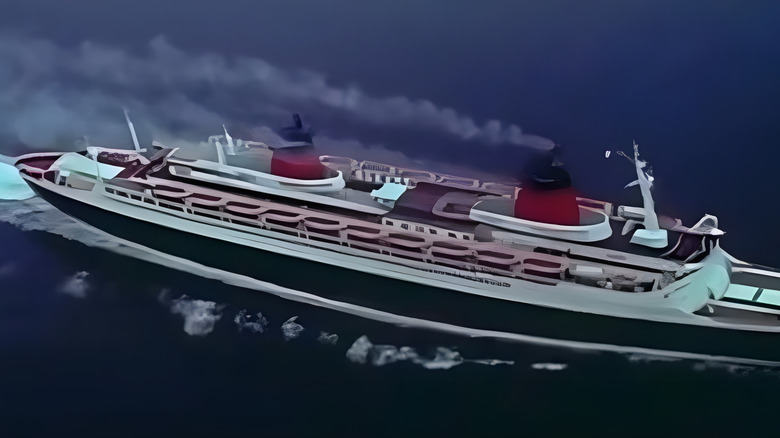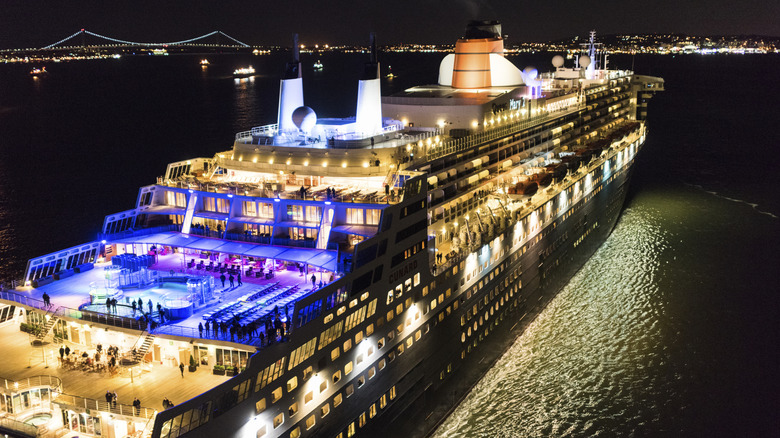Rags To Riches: This Popular Cruise Ship Was Once A Fading Ocean Liner
Ocean liners rose in popularity during the early 20th century as they were a fast and reliable mean of transportation for transoceanic travel. The North Atlantic route connecting America to Europe saw some of the most majestic ships to sail the waters, like the fast SS United States, the capable SS Normandie, the unfortunate RMS Titanic, and more.
However, ocean liners quickly lost their appeal when commercial aviation took center stage for fast travel. Passenger jets like the 747 could connect Europe to America's east coast in around 8 hours, compared to nearly 4 days on a typical ocean liner. As passengers looking for faster travel transitioned to flying, numerous ocean liners were forced out of business during the 60s and 70s. Some ships tried making a comeback by converting to cruise ships, but their multi-class construction and huge operational costs made the conversion impractical.
Although French Line's SS France was yet another massive ocean liner with exorbitant operational costs and multi-class construction, it was an anomaly as it successfully transitioned to a popular cruise ship, SS Norway. It took a historic facelift that paved the way for larger cruise ships.
SS France was once a symbol of French glory
Ocean liners were not just ships that carried passengers, they used to be a symbol of national pride. Ship makers competed neck and neck to produce the best ocean liners to garner more customers while making their countrymen proud. The French Line, or locally referred to as Compagnie Générale Transatlantique operated two of the biggest French ocean liners – the Liberte and Normandie. The French Line had to retire both ships due to the aging of the Liberte by the early 60s and a fire onboard the Normandie in 1942.
Instead of building two small ships as replacements, the French Line went with building a single large and more capable ship, SS France. Launched in 1960, SS France was a unique-looking ship propelled by geared CEM-Parsons turbines and quadruple propellers. The 1037 feet long ship could carry 637 first class and 1637 travel class passengers at 30 knots, thanks to its engines that produced 160,000 horsepower.
While there was nothing wrong with the ship, it was launched during a time when travelers were making a paradigm shift in favor of air travel. The French Line relied heavily on government subsidies to keep the ship afloat, however, the oil crisis in 1973 was the final nail in SS France's coffin.
The French Line asked the government for additional subsidies to operate the ship despite growing oil prices. However, to their dismay, the government not only rejected the request but ended the subsidies altogether to fund the Concorde supersonic jet, which ultimately failed. It was impossible to operate the ocean liner without government subsidies, and the ship sailed its final journey on October 25, 1974.
SS France was ultimately converted to SS Norway
After shutting down its services, SS France was docked for nearly five years before it was resurrected. While hardcore maritime travel dropped during the 60s and 70s, recreational travel in the form of cruises was on the rise. In fact, SS France too operated as a cruise ship to exotic Caribbean locations in the winter months.
Back then, cruise operators preferred smaller cruise ships, as they were cheaper to operate and could access smaller ports. However, the NCL (Norwegian Cruise Line) thought differently and wanted to add a larger cruise ship to their fleet. NCL considered retired ocean liners to convert them to cruise ships and considered prospects like the SS United States, Michelangelo Raffaello, and more.
SS France was ultimately chosen for the purpose due to a variety of reasons. First, the ship had already made a name for itself as a cruise ship, which made it easier to attract passengers. Moreover, the ship had only been used a few years before shutting its services, meaning it had a long life ahead. Additionally, the ship only had two classes, which made it easier to revamp the interiors and convert it into a cruise. NCL bought the ship for $18 million and spent an additional $65 million to fuel the three-year-long conversion to SS Norway, adding modern amenities like nightclubs, theaters, restaurants, gaming areas, and much more.
Passengers loved the idea of enjoying resort-like facilities on SS Norway while traveling to exotic locations, something that was missing in smaller cruise ships of the time. SS Norway's impact is evident in today's cruise ships, which are some of the biggest ships in the world. SS Norway had a successful career as a cruise ship until 2003, when NCL retired the aging ship.


